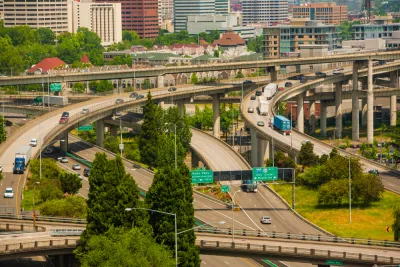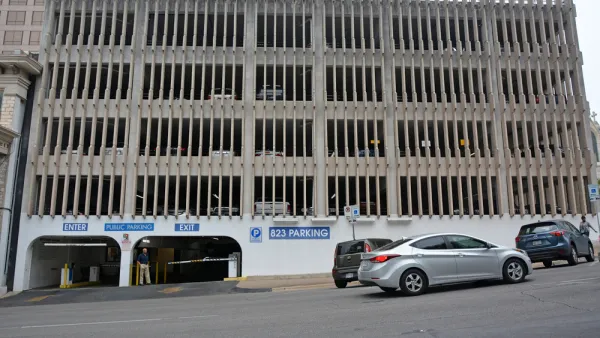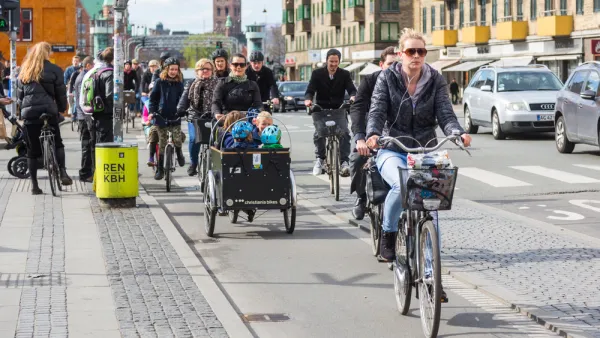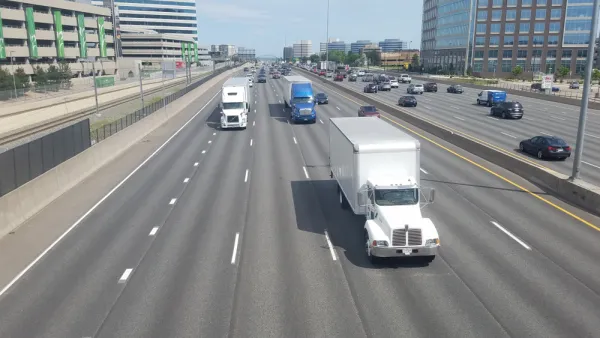Portland wants it both ways, but so do most places. But if Portland can't quit the car habit, which cities can?

Nadja Popovich and Brad Plumer in April wrote a feature-length, graphics- and image-laden article for the New York Times about Portland’s transportation planning agenda, posing a dilemma that could be repeated all over the country, but with special significance in Portland, a city known for innovative and climate-friendly approaches to land use and transportation planning.
Now the city faces a fresh challenge: To deal with traffic jams, state officials want to expand several major highways around Portland. Critics say that will only increase pollution from cars and trucks at a time when emissions need to fall, and fast.
This comes despite decades of efforts to get residents out of their cars, according to the article.
Over the past few decades, Oregon’s largest city has built an extensive light rail system, added hundreds of miles of bike lanes and adopted far-reaching zoning rules to encourage compact, walkable neighborhoods. Of the 40 largest U.S. metropolitan areas, Portland saw its residents drive the third-fewest miles per day in 2019, on average, behind only New York and Philadelphia.
The three highway projects identified in the article are the I-5 Rose Quarter Improvement Project, an interstate bridge replacement project sometimes referred to as the Columbia River Crossing, and a plan to add lanes and make other changes on I-205.
The political debate over the future of Oregon transportation planning centers on the conflicting goals of emissions reductions and congestion relief—in a city where transportation accounts for the vast majority of carbon dioxide emissions. The source article, linked below, includes discussions of induced demand, electric vehicles, transportation demand management, urban growth boundaries, and automobile dependency, and freeway removal, among other big planning concepts.
FULL STORY: Can Portland Be a Climate Leader Without Reducing Driving?

Analysis: Cybertruck Fatality Rate Far Exceeds That of Ford Pinto
The Tesla Cybertruck was recalled seven times last year.

National Parks Layoffs Will Cause Communities to Lose Billions
Thousands of essential park workers were laid off this week, just before the busy spring break season.

Retro-silient?: America’s First “Eco-burb,” The Woodlands Turns 50
A master-planned community north of Houston offers lessons on green infrastructure and resilient design, but falls short of its founder’s lofty affordability and walkability goals.

Test News Post 1
This is a summary

Analysis: Cybertruck Fatality Rate Far Exceeds That of Ford Pinto
The Tesla Cybertruck was recalled seven times last year.

Test News Headline 46
Test for the image on the front page.
Urban Design for Planners 1: Software Tools
This six-course series explores essential urban design concepts using open source software and equips planners with the tools they need to participate fully in the urban design process.
Planning for Universal Design
Learn the tools for implementing Universal Design in planning regulations.
EMC Planning Group, Inc.
Planetizen
Planetizen
Mpact (formerly Rail~Volution)
Great Falls Development Authority, Inc.
HUDs Office of Policy Development and Research
NYU Wagner Graduate School of Public Service




























